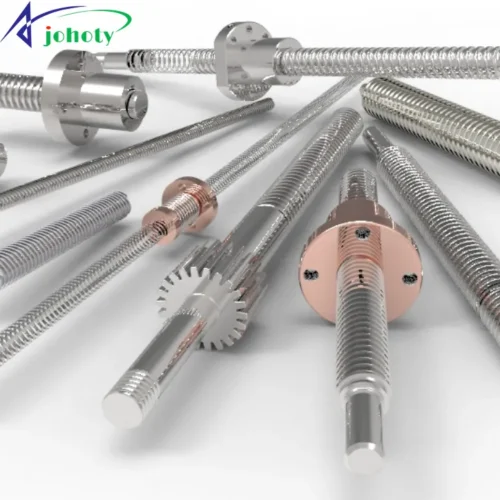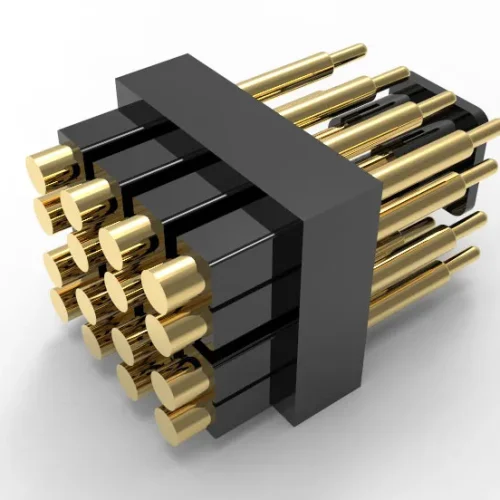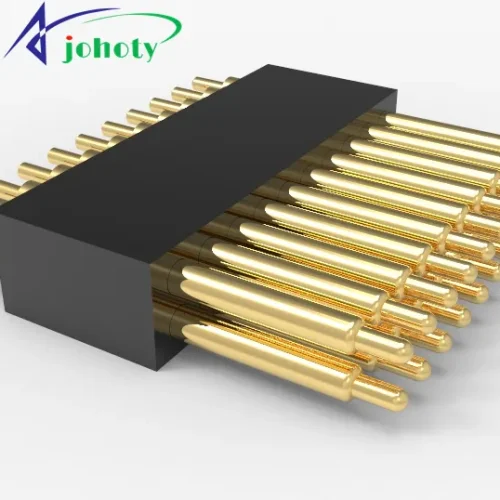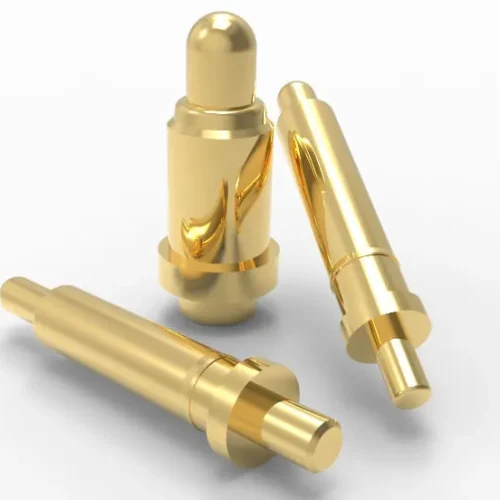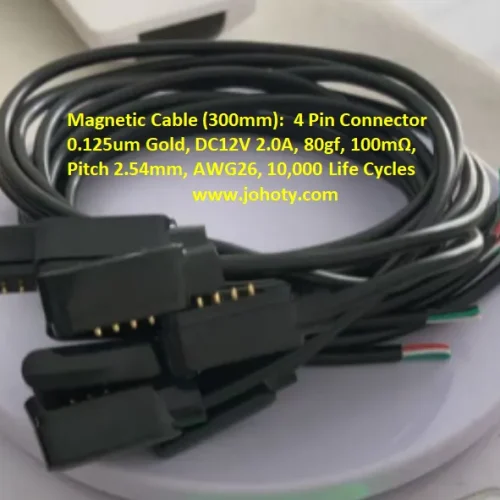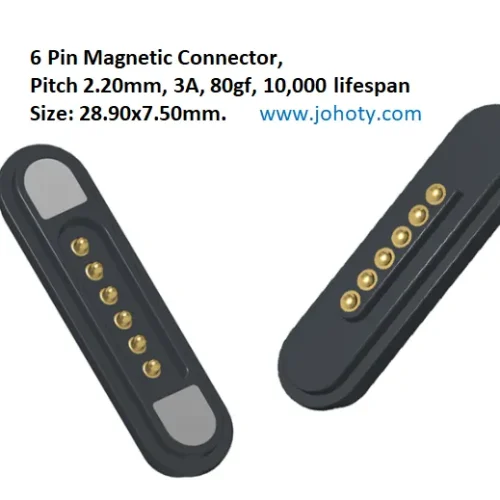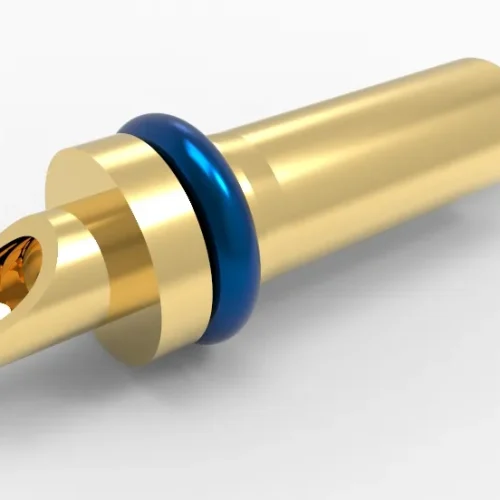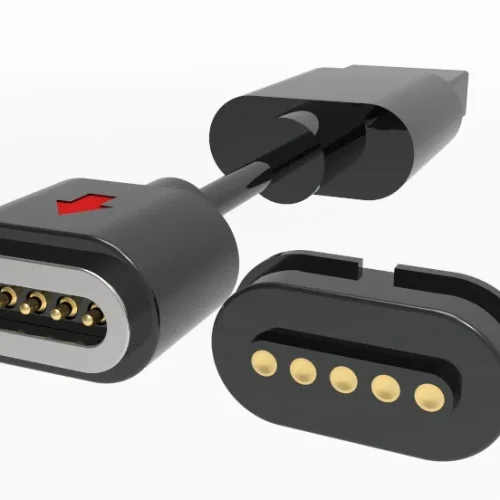Ball Screw vs Lead Screw, Engineer’s Choice Guide. Detailed Comparison from Performance to Cost, Differentiation, and Applications. Comprehensive Analysis, a Must-read for Engineers.
Ball Screw vs Lead Screw
Ball Screw: A precision power transmission solution for high-performance machinery. Utilizing recirculating ball bearings for smooth rolling, enabling smoother motion, increased efficiency, and higher precision. Perfect for high-speed, high-precision applications where accuracy is paramount.
Lead Screw: A reliable and cost-effective linear motion solution. Direct contact between screw and nut, simple design, and low maintenance costs. Suitable for moderate loads and applications with less stringent precision requirements.
Introduction: Ball Screw vs Lead Screw
In mechanical design and engineering projects, selecting the appropriate transmission components is crucial. Ball screws and lead screws, as two common transmission elements, each have unique advantages and suitable scenarios.
So, which one is more ideal for your project? This article will delve into the working principles, performance characteristics, and applications of ball screws and lead screws. Help you make an informed decision.
What is Ball Screw: Ball Screw vs Lead Screw
Working Principle:
- A ball screw assembly comprises a threaded screw shaft and a nut containing circulating ball bearings. These balls roll between the screw and the nut, reducing friction and increasing transmission efficiency. The presence of the balls enables the ball screw to achieve higher precision and efficiency.
Performance Characteristics:
- High Efficiency and Low Friction: The rolling friction coefficient of the balls is much lower than the sliding friction coefficient. The transmission efficiency of ball screws can exceed 90%. Such a quality affords them a significant advantage in situations where optimal power transfer is essential.
- High Precision: Ball screws are crafted with meticulous precision, ensuring exacting standards, providing accurate positioning and repeatability. Their precision is typically within 0.01 millimeters, making them suitable for applications with extremely high precision requirements.
- Strong Load Capacity: Ball screws can withstand large axial loads, suitable for transmission in heavy-load scenarios. Their rigidity and durability also contribute to superior performance during long-term use.
- Long Service Life: Due to the rolling friction of the balls, ball screws experience minimal wear and have a longer service life. Proper lubrication and maintenance can further extend their service life.
Applications:
- Ball screws are widely used in fields requiring high precision and efficiency transmission. Such as CNC machine tools, industrial robots, precision measurement equipment, and automated production lines.
- In these applications, the high precision, efficiency, and long service life of ball screws significantly enhance equipment performance and reliability.
What is Lead Screw: Ball Screw vs Lead Screw
Working Principle:
- A lead screw consists of a screw and a nut. The nut is typically made of metal or plastic and moves linearly by engaging with the threads of the screw. Unlike ball screws, lead screws rely on sliding friction between the threads to transmit power.
Performance Characteristics:
- Simple and Economical: Lead screws are relatively simple to design and manufacture, resulting in lower costs. For projects with limited budgets or applications with low precision requirements, lead screws are a cost-effective choice.
- Self-locking: Due to the friction between the threads, lead screws exhibit a certain degree of self-locking ability. This means that lead screws can maintain their position without external forces. This attribute proves particularly beneficial in specific applications where preventing unintended movement is critical.
- High Thrust Capability: Lead screws can generate significant thrust, making them suitable for applications requiring high thrust but low speed. Their thrust capacity depends on the thread angle and friction coefficient.
- Durability and Maintenance: The durability of lead screws depends on the materials used and the operating environment. In heavy-load and high-friction environments, lead screws may experience faster wear. Therefore, proper lubrication and maintenance are crucial for extending their service life.
Application Scenarios:
- Lead screws are widely used in fields requiring high thrust but low precision. Such as manual adjustment devices, elevators, clamps, and certain types of automation equipment.
- In these applications, the simple design, cost-effectiveness, and self-locking feature of lead screws make them an ideal choice.
Efficiency Comparison: Ball Screw vs Lead Screw
Ball Screw Efficiency:
- High Transmission Efficiency: The transmission efficiency of ball screws is typically above 90%, reaching up to 98%. This is because ball screws rely on ball bearings rolling between the screw and nut. With a rolling friction coefficient much lower than a sliding friction coefficient. High efficiency means that with the same input energy, ball screws can provide greater output force and higher motion speed.
- Low Heat Generation: Due to the minimal heat generated by rolling friction, ball screws experience lower temperature rise during prolonged operation. This leads to an extended component lifespan and improved system stability and reliability.
- Suitable for High-Precision Applications: The high efficiency of ball screws enables excellent performance in applications requiring precise positioning and repeatability. High efficiency not only improves transmission performance but also reduces energy loss in the system.
Lead Screw Efficiency:
- Lower Transmission Efficiency: The transmission efficiency of lead screws typically ranges from 20% to 70%, depending on thread design, materials, and lubrication conditions. Lead screws rely on sliding friction between threads to transmit power. This results in a higher sliding friction coefficient and thus lower efficiency.
- Higher Heat Generation: Due to the increased heat generated by sliding friction, lead screws experience higher temperature rise during prolonged operation. This may accelerate wear and shorten the lifespan of the screw and nut.
- Suitable for Self-Locking Applications: Despite lower efficiency, the high friction coefficient of lead screws provides self-locking characteristics. This is particularly useful in applications where preventing unintended movement is crucial, such as vertical lifting equipment and safety devices.
Precision Comparison: Ball Screw vs Lead Screw
Ball Screw Precision:
- High Positioning Accuracy: Due to the low friction coefficient resulting from the rolling of balls between the screw and nut. Ball screws can provide extremely high positioning accuracy. Common ball screws can achieve positioning accuracy within 0.01 millimeters. Thus, ball screws are exceptionally well-matched for tasks that require precise accuracy in positioning. Examples include CNC machining equipment and high-precision measuring instruments.
- Excellent Repeatability: With its low friction and high-efficiency characteristics, ball screws offer high repeatability in positioning. The system can undergo multiple cycles of motion without significantly deviating from the original position. Which is crucial in industrial automation and robotics applications.
- High Manufacturing Precision: Ball screws require high manufacturing standards, with both the screw and nut requiring high machining precision. Precise manufacturing practices and exceptional materials ensure the overall accuracy and long-term stability of ball screws.
Lead Screw Precision:
- Lower Positioning Accuracy: Lead screws rely on sliding friction between threads to transmit power. This results in a higher friction coefficient and lower positioning accuracy. The positioning accuracy of lead screws is typically around 0.1 millimeters, depending on thread design and manufacturing processes.
- Moderate Repeatability: The sliding friction of lead screws leads to faster wear, resulting in cumulative errors over prolonged use. This affects the system’s repeatability in positioning, making lead screws less favorable than ball screws in applications requiring high repeatability.
- Simple Manufacturing Process: Lead screws have a relatively simple manufacturing process and lower costs. However, the machining precision of threads and material selection still impact their overall accuracy and lifespan.
Load Comparison: Ball Screw vs Lead Screw
Ball Screw Load Capacity:
- High Axial Load Capacity: Ball screws bear axial loads through the ball bearings rolling between the screw and nut. With a large contact area, the balls distribute the load, enabling ball screws to withstand substantial axial loads. This characteristic makes them exceptionally suitable for tasks involving substantial weight requirements. Such as CNC machine tools and large industrial equipment.
- Durability and Rigidity: Ball screws are typically made of high-strength alloy steel, offering high durability and rigidity. The precision manufacturing of the balls and raceways ensures stability and long-term lifespan under heavy loads.
- Heat Treatment and Surface Treatment: To enhance load capacity, ball screws often undergo heat treatment and surface hardening. These procedures enhance the toughness and durability of both the screw and nut, further improving their load capacity.
Lead Screw Load Capacity:
- Lower Axial Load Capacity: Lead screws rely on sliding friction between threads to transmit power, resulting in a smaller contact area and higher friction. Although lead screws can withstand some axial loads, their load capacity is typically lower than that of ball screws. In heavy-load applications, lead screws perform less effectively than ball screws.
- Material Selection and Thread Design: The load capacity of lead screws is closely related to material selection and thread design. Common materials include stainless steel and plastics, and thread design also affects their load-bearing capacity. The choice of thread angle and pitch can optimize their load performance, but overall load capacity remains limited.
- Self-Lubrication and Wear: Lead screws are prone to wear under heavy loads, requiring frequent lubrication and maintenance. While some lead screw designs incorporate self-lubrication features, their durability and load capacity are still limited in high-load applications.
Cost Comparison: Ball Screw vs Lead Screw
Ball Screw Cost:
- Higher Initial Cost: The manufacturing process of ball screws is complex, and material selection is strict, resulting in a higher initial cost. The precision machining and design requirements of the ball recirculation system necessitate precision manufacturing. Thus the cost of ball screws is significantly higher than that of lead screws during purchasing and installation.
- Maintenance Costs: Regular lubrication and upkeep are essential for ball screws to maintain optimal performance. These maintenance requirements increase operating costs. However, due to the durability and high efficiency of ball screws. Their long lifespan and low failure rate can save costs over the long term.
- Long Lifespan: Despite the higher initial cost, the long lifespan and high performance of ball screws may bring cost-effectiveness in long-term applications. For high-precision applications requiring long-term stable operation, their high initial investment is offset by their long-term performance benefits.
Lead Screw Cost:
- Lower Initial Cost: The design and manufacturing of lead screws are relatively simple, resulting in lower costs. The manufacturing of the screw and nut doesn’t require highly precise machining, thus requiring less initial investment. For projects with limited budgets, lead screws are a cost-effective choice.
- Maintenance and Replacement Costs: Lead screws are prone to wear in high-friction and heavy-load applications, requiring frequent lubrication and replacement. These maintenance requirements increase operating costs, especially in high-load applications. The higher wear and failure rates of lead screws may lead to more frequent downtime and replacements.
- Shorter Lifespan: The lifespan of lead screws is typically shorter than that of ball screws. Although the initial cost is lower, the higher maintenance and replacement frequency may increase total costs during long-term high-load operations. Therefore, when requiring long-term stable operation, the overall cost of lead screws isn’t as economical as ball screws.
Lifecycle and Maintenance Comparison: Ball Screw vs Lead Screw
Ball Screw Lifecycle and Maintenance:
- Long Lifespan: Due to the rolling of balls between the screw and nut resulting in extremely low friction coefficients, experience minimal wear. This low-wear characteristic grants ball screws an exceptionally long lifespan, particularly in high-load and high-precision applications. Proper lubrication and maintenance can further extend their lifespan, often reaching tens of thousands of hours of trouble-free operation.
- Maintenance Requirements: Ball screws require regular lubrication to maintain their high-efficiency operation. Lubricants reduce friction between balls and raceways, preventing wear and corrosion. While regular maintenance is necessary, the high durability of ball screws results in lower and simpler maintenance frequency.
- Reliability: The high manufacturing precision and quality materials of ball screws ensure their reliability in heavy-load and high-precision applications. With their wear-resistant and long-life characteristics, ball screws exhibit low failure rates over prolonged use, reducing downtime and maintenance costs.
Lead Screw Lifecycle and Maintenance:
- Shorter Lifespan: Lead screws rely on sliding friction between threads to transmit power, resulting in faster wear due to higher friction coefficients. In high-load and high-friction environments, the lifespan of lead screws is relatively short. While some lead screw designs incorporate self-lubrication features, their overall lifespan remains limited.
- Frequent Maintenance: Lead screws require frequent lubrication and maintenance during operation to reduce friction and wear. The heat and wear caused by high friction necessitate regular inspections and lubricant replacements. This could involve the complete replacement of both the screw and nut assemblies. The higher maintenance frequency increases maintenance costs and downtime during operation.
- Limited Reliability: The high friction and wear characteristics of lead screws result in lower reliability during prolonged high-load use. Wear not only affects accuracy but may also lead to transmission failures, necessitating more frequent maintenance and replacements. Impact on the overall reliability of the system.
Which Suits Your Projects Best? Ball Screw vs Lead Screw
Load Requirements:
- Determine the magnitude and type of load that needs to be transmitted. Ball screws typically withstand larger loads, making them suitable for high-load applications. While lead screws are better suited for medium-sized loads.
Precision Requirements:
- Ball screws excel in providing enhanced precision and repeatability, making them a perfect fit for applications requiring precise positioning. Lead screws typically have lower precision but may be more cost-effective for applications with lower precision requirements.
Speed Requirements:
- Ball screws usually have higher speed capabilities, making them suitable for high-speed motion systems. Lead screws may be more stable at lower speeds.
Environmental Conditions:
- Consider factors such as cleanliness, temperature, humidity, and corrosiveness in the working environment. Take, for instance, environments with high temperatures or corrosive conditions, ball screws might exhibit greater durability compared to lead screws.
Power Efficiency:
- Ball screws typically have higher power efficiency, effectively converting input power into mechanical motion. Consequently, they are better tailored for certain applications requiring energy efficiency or higher efficiency.
Cost Considerations:
- Ball screws are generally more expensive than lead screws. Therefore, it’s important to balance performance and cost considerations, especially in budget-constrained situations.
Installation and Maintenance:
- Take into account the intricacy of installation and maintenance. Ball screws usually require more precise installation and maintenance, while lead screws may be easier to install and maintain.
Conclusion
Each type of screw has its advantages and limitations. In the vast majority of engineering applications requiring high loads, precision, and speed, ball screws often emerge as the superior choice. Ball screws boast higher precision, better repeatability, increased speed capabilities, and greater power efficiency. This makes them the preferred option in many industrial settings.
However, in some scenarios with low loads, low speeds, or less stringent precision requirements. Lead screws could potentially offer a more budget-friendly alternative. Lead screws are typically cheaper and can deliver sufficient performance in certain straightforward mechanical systems.
Therefore, when selecting between ball screws and lead screws, engineers should carefully weigh various factors. By carefully evaluating the exact needs of the application and financial limitations, you can determine the most appropriate solution. Contact Johoty now, we’re the experts you need!

